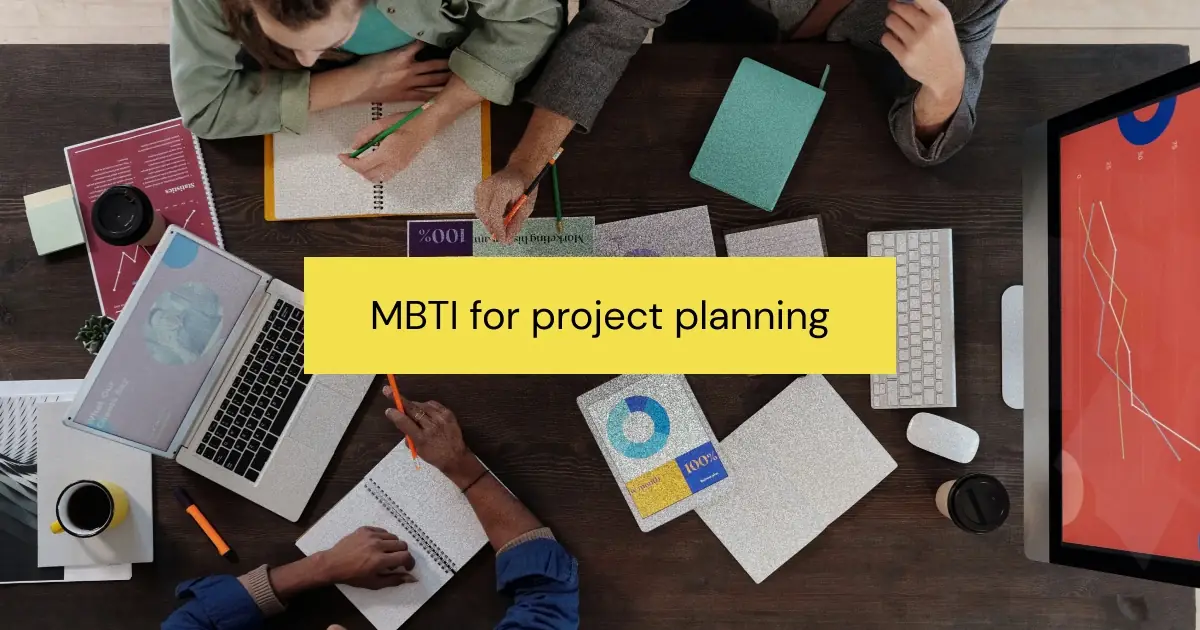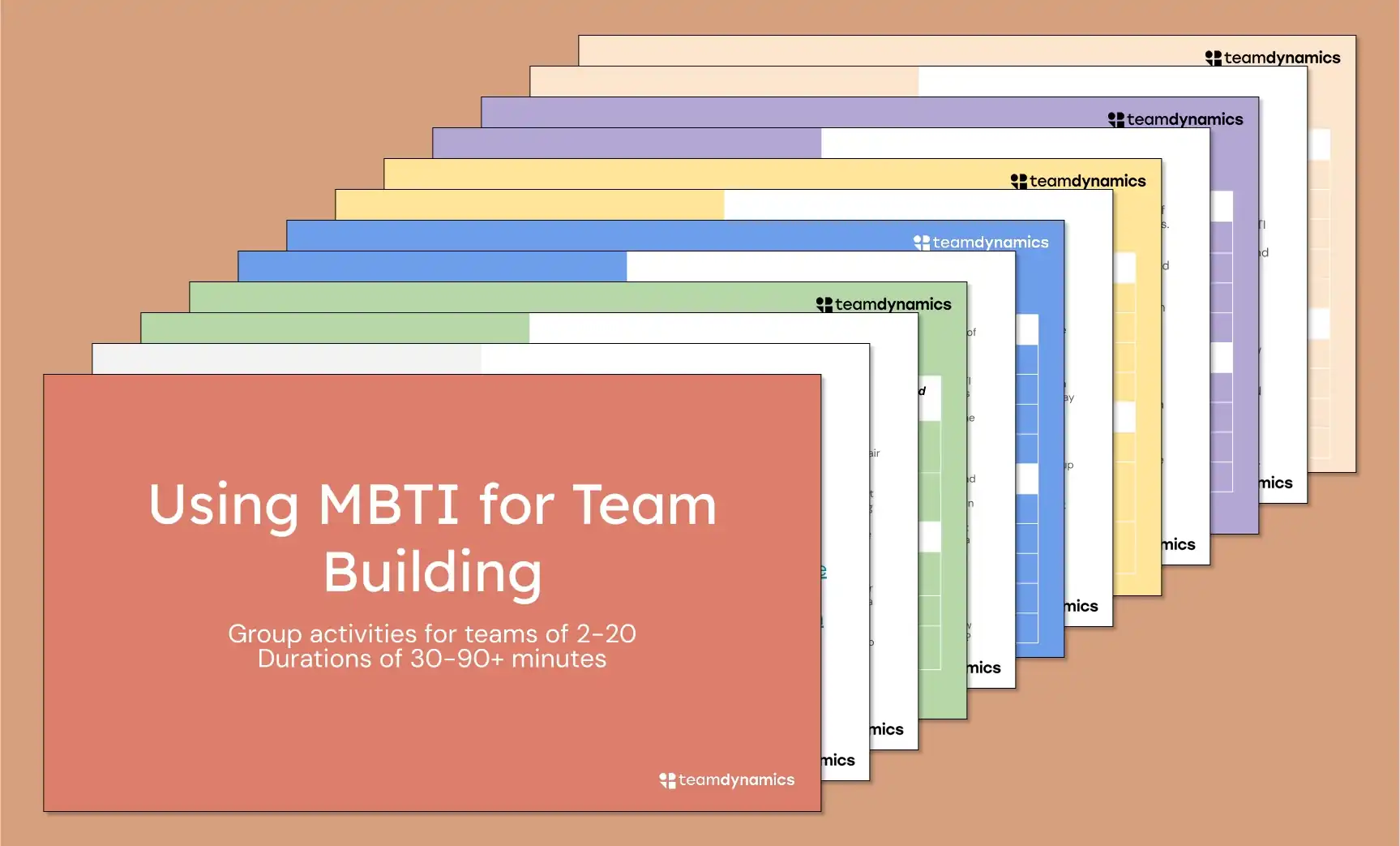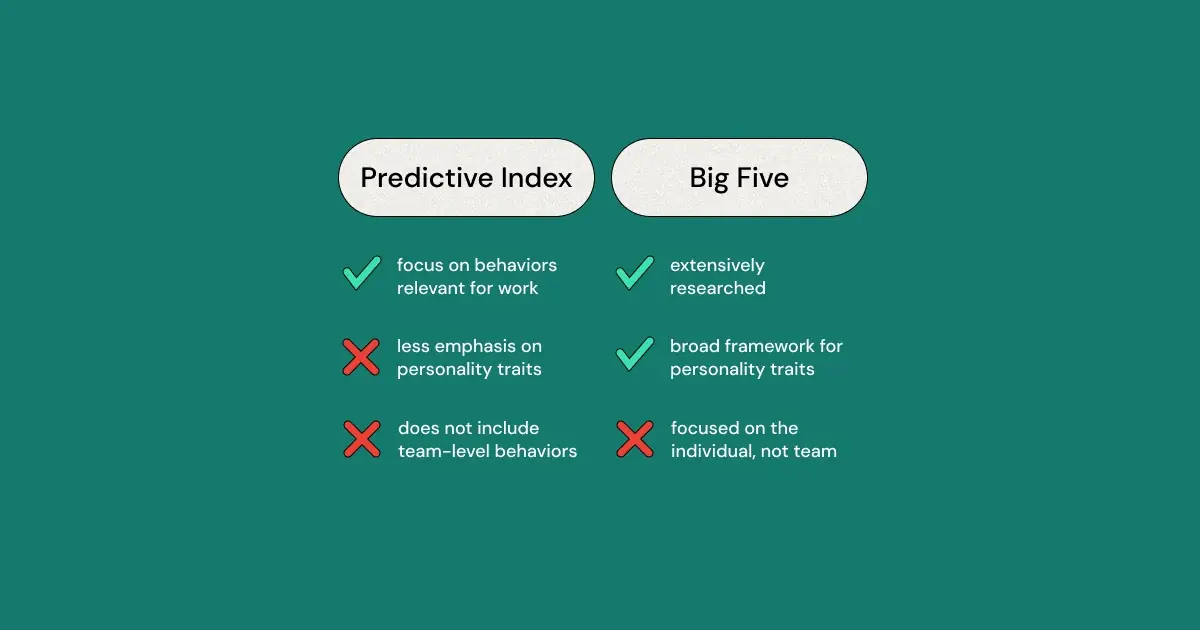Are you familiar with the MBTI Personality Test? The MBTI, or Myers-Briggs Type Indicator, is a fascinating tool designed to help us get a deeper understanding of our personality types. By asking a series of questions, the test categorizes us into one of 16 personality types. Each type is unique, just like us!
But why should we care about these personality types? It's simple. When we understand our own personality and the personalities of others, we can work better together. That's what team dynamics is all about. Think about it like a sports team. If you know who's a great shooter, who's excellent at defense, and who's a brilliant strategist, you can form a game plan that uses everyone's strengths.
In the professional world, it's just the same. Understanding personality types can help us improve how we plan and execute projects. This makes our work smoother, more efficient, and ultimately, more successful.
In this blog post, we're going to dive deep into how the MBTI personality test can supercharge your team's project planning and execution. We'll explore the strengths and challenges of each personality type, show how they can affect your team's work, and give you practical advice on how to leverage this understanding. Whether you're a seasoned professional or just starting your career journey, this knowledge is a powerful tool for success.
Stick around, and let's make the most of our team's personality power!
{{inline-cta}}
The MBTI Personality Types and Their Traits in the Workplace
Now that we've established the importance of understanding our personalities in the workplace let's delve into what these 16 MBTI personality types actually are. These unique categories are derived from four pairs of personality traits: Extraversion (E) or Introversion (I), Sensing (S) or Intuition (N), Thinking (T) or Feeling (F), and Judging (J) or Perceiving (P). By understanding where we fall on these scales, we can get a better grasp of how we prefer to work, communicate, and interact with the world.
Imagine you're part of a team working on a school project. In your group, you have Sarah, who's always brimming with ideas (a hallmark of an Intuitive personality). Then there's Chris, who is fantastic at following through on plans (a characteristic of a Judging type). Lily, on the other hand, is great at understanding how people feel and ensuring everyone gets along (a typical Feeling trait). And finally, you have Alex, who loves to gather and analyze all the data before making a decision (a trait common to Thinking types).
Each of these 16 MBTI personality types brings unique strengths to a team. For instance, an Extravert might excel at energizing the group and facilitating communication, while an Introvert could provide thoughtful insights and a detailed focus. A Sensing type may be excellent at dealing with practical matters and working with facts and details, while an Intuitive type might be great at seeing the big picture and brainstorming innovative solutions.
However, each type also comes with its own set of challenges. For example, an Extravert may dominate conversations, potentially overshadowing the ideas of quieter team members. Introverts may struggle with speaking up or actively participating in group discussions. Sensing types might get too caught up in the details, while Intuitive types may overlook important facts or practicalities.
Recognizing these strengths and challenges is a crucial step towards making the most of each team member's contributions. Remember, a balanced team that acknowledges and capitalizes on the diverse strengths of its members is a force to be reckoned with. So, let's harness the power of MBTI personality types and aim for success!
Looking to use MBTI for team building? Download these free templates for MBTI team building workshops!
How Personality Types Influence Team Project Planning
Did you know that your personality type can influence how you plan a project? Just as each of us has a unique style of dressing or favorite type of music, we also have distinct planning styles influenced by our MBTI types.
Take Mark, an ISTJ (Introverted, Sensing, Thinking, Judging) personality type, working at a tech company. Mark is methodical and detail-oriented. He prefers to create a clear, step-by-step plan, ensuring that every detail is considered.
In contrast, Emma, an ENFP (Extraverted, Intuitive, Feeling, Perceiving), works best when she has the flexibility to adapt and change as the project progresses. She's full of big ideas and isn't afraid to adjust the plan if she sees a more creative solution.
With such different planning styles, how do we make sure everyone works together effectively? Here are a few practical tips for harmonizing diverse planning approaches:
- Communication is key: Regular team meetings where everyone has a chance to express their ideas and concerns can go a long way in ensuring everyone is on the same page.
- Respect for different styles: Understanding that there is more than one way to plan a project can help team members value the diverse planning styles in their team.
- Balance detailed plans with flexibility: A good project plan will accommodate the need for details (which Sensing types like Mark love) and the desire for flexibility and room for creative solutions (which Intuitive types like Emma thrive on).
- Assign roles based on strengths: If someone is great at setting detailed plans, they can lead that part of the project. If another person is good at thinking on their feet and adapting to changes, they can be in charge of managing unexpected situations.
Remember, when diverse planning styles are harmonized effectively, it leads to a well-rounded and robust project plan that can handle the challenges ahead. So, embrace your team's diverse MBTI types and let them shape your project planning for the better!
The Role of Personality Types in Project Execution
Project execution, like the final act of a well-crafted play, is where all the planning and preparation come to life. But did you know that different MBTI personality types can affect the way we execute our plans and influence the outcomes of our projects?
Let's consider a graphic design team working on a project. Hannah, an ESFJ (Extraverted, Sensing, Feeling, Judging), is superb at organizing the team and keeping everyone motivated. She ensures that everyone knows their roles and feels valued. Meanwhile, Noah, an INTP (Introverted, Intuitive, Thinking, Perceiving), is an innovative problem-solver. When the team encounters an unexpected technical issue, it's Noah who comes up with a clever workaround.
Both Hannah and Noah, with their distinct personality traits, influence the project outcome in different ways. Hannah's ability to create a positive team environment can boost morale and productivity, while Noah's problem-solving skills can help the team overcome obstacles.
So, how can you leverage these personality strengths during the project execution phase? Here are some strategies:
- Match tasks with personality strengths: Assign roles that match each person's strengths. For example, Extraverted types, like Hannah, can lead presentations or coordinate team meetings, while Introverted types, like Noah, might excel in roles that require deep thinking or problem-solving.
- Foster a collaborative environment: Encourage each team member to contribute their unique perspective and skills. This will not only enhance the quality of the work but also promote a sense of inclusivity.
- Celebrate individual contributions: Recognizing each person's contribution can increase motivation and morale. It's not just about who did the most work; it's about appreciating the diverse strengths that each personality type brings to the table.
- Embrace flexibility: Be open to adjusting plans based on the team's strengths and the project's needs. This allows the team to utilize each member's strengths to their fullest potential.
In summary, understanding and leveraging the strengths of different MBTI types can significantly improve project execution. By valuing and utilizing our unique strengths, we can work together to create amazing things!
{{inline-cta}}
Case Studies: Successful Teams Using MBTI for Planning and Execution
It's one thing to talk about how MBTI personality types can enhance team performance, but it's another to see it in action. Let's look at some real-world examples or case studies of teams that have successfully applied MBTI insights for improved planning and execution.
First up is a tech start-up company that was having trouble meeting project deadlines. After taking the MBTI test, they realized that their team was heavily skewed towards Perceiving types. These individuals prefer to keep their options open and may struggle with sticking to a rigid plan. Recognizing this, the team made adjustments to allow for more flexibility in their planning. They also brought in a few Judging types who excel in setting and following concrete plans. The result? Their project completion rate skyrocketed!
Our second case study comes from a customer service team in a retail company. After an MBTI workshop, they discovered that their team had a variety of personality types. The Extraverted team members excelled in customer interactions but struggled with paperwork and routine tasks. On the other hand, the Introverted members were fantastic at dealing with these details but found continuous customer interaction exhausting. They decided to restructure their responsibilities based on their strengths. The outcome was a significant boost in team morale and customer satisfaction rates.
So, what can we learn from these examples? Here are some actionable takeaways:
- Understand your team's personality composition: Are you heavy on Thinkers but light on Feelers? Do you have a good mix of Sensing and Intuitive types? Understanding your team's personality composition can help you strategize more effectively.
- Play to strengths: Assign tasks based on the strengths of your team members. If someone is a natural problem solver, let them handle the tricky issues. If another team member is excellent at organization, let them manage the schedule.
- Balance your team: If your team is too skewed towards one type or another, it might be worth bringing in some different personality types to create a more balanced team.
- Keep communication open: Always encourage open communication within your team. This will not only help in resolving issues but also ensure that all team members feel heard and valued.
Remember, the goal isn't to pigeonhole anyone based on their MBTI type, but rather to appreciate the different strengths that each individual brings to the team. This understanding and appreciation can help make your team more effective and harmonious!
How to Implement MBTI Understanding in Your Team
The power of the MBTI lies in its ability to provide a lens through which we can better understand ourselves and our teammates. But how do you apply this knowledge practically in your team? Let's walk through a step-by-step guide to implementing MBTI understanding in your team settings.
Step 1: Understand the Basics of MBTI
The first step is to familiarize yourself and your team with the basics of the MBTI. This includes understanding the four pairs of personality traits and what each of the 16 personality types represents.
Step 2: Take the MBTI Test
Encourage each team member to take the MBTI test. There are several online resources where you can do this. Remember, the goal is not to label or restrict anyone but to help individuals better understand their strengths and preferences.
Step 3: Share and Discuss
Create an open and safe space for team members to share their results and discuss what these mean to them. This can be an enlightening experience, helping team members understand why they may work or think differently.
Step 4: Apply the Insights
Start applying the insights to your team dynamics. This could mean adjusting how you assign tasks, communicate, or handle conflicts based on your understanding of different personality types.
Step 5: Review and Adjust
Regularly review how these changes are affecting your team's performance and satisfaction. Are there areas that need further adjustment? Are certain strategies working particularly well? Keep the conversation going and be prepared to adapt as needed.
When it comes to continuous improvement and adaptation, here are some tips:
- Keep learning: The MBTI is just one of many tools available to understand human behavior. Keep learning about different theories and models and how they might complement your understanding of the MBTI.
- Stay flexible: People can grow and change over time. Be open to the possibility that someone's work style or preferences may shift and adapt your strategies accordingly.
- Promote open dialogue: Encourage team members to share their thoughts and feelings about the team dynamics and any changes you're implementing. This feedback is invaluable for continuous improvement.
By implementing MBTI understanding in your team, you can create a more harmonious, efficient, and enjoyable work environment for everyone involved. Remember, the strength of a team comes from its diversity. By appreciating and leveraging the unique strengths of each team member, you can achieve incredible results!
The right tools can make team chemistry tangible and actionable
Myers-Briggs is a great individual personality test. It’s simple, descriptive, positive, and widely known. Millions of people use it every year to understand themselves and individuals around them. However, the key to getting the most out of MBTI is knowing when to use it, and when not to use it.
If you find yourself asking, “How does my team really make decisions” or “How do we make better decisions as a team?” and you’re asking about more than a pair of individuals, you might consider looking for another behavioral assessment. Consider TeamDynamics, which is built to assess how modern teams work together to get work done.
Looking for alternatives to MBTI? Here a look at the top 5 MBTI alternatives.
Team decision-making might seem like something magical or mysterious. However, with the right tools, you can measure it, manage it, and make it better!
{{inline-cta}}
Conclusion
As we wrap up our journey into the world of MBTI, let's recap what we've learned. Understanding your team's personality types using the MBTI can significantly boost project planning and enhance execution. Whether you're an Extravert or an Introvert, a Sensing type or an Intuitive one, a Thinker or a Feeler, a Judging or a Perceiving type, your unique strengths and preferences can contribute to your team's success.
We've explored real-world examples of teams who've harnessed MBTI insights to improve performance and offered practical strategies for harmonizing diverse planning styles and leveraging personality strengths. From a tech startup learning to balance their project planning approach to a customer service team enhancing their service through personality-driven task assignment, we've seen how understanding and applying MBTI can lead to positive change.
But remember, the MBTI is not a one-size-fits-all answer. It's a tool, a lens to better understand ourselves and others. It's the start of a conversation about how we can work together more effectively, appreciate our differences, and celebrate our diversity.
So, we encourage every team out there to embrace this diversity and leverage your understanding of MBTI. Your team's strength lies in the unique blend of individuals who bring their skills, perspectives, and, yes, their personality types to the table. Harness that strength, appreciate and value it, and see how your team flourishes!
Let's continue to explore, learn, and adapt. Here's to better project planning, smoother execution, and stronger teams through the power of personality understanding!
Check out our other MBTI resources!
We hope you've found this guide useful. Remember, everyone's experience is unique, and it's about finding strategies that work best for you. If you enjoyed reading this, don't keep it to yourself! Share it with your friends, colleagues, or anyone you think could benefit from it. Let's create a more understanding and inclusive workplace together!
MBTI is one of the most popular personality tests, and people are always asking us how they can better use it with their teams. Here are a few other useful articles you can try:
And if you're looking to crack the code on working with a specific MBTI type, check out our guides written just for you:
Interested in diving deeper into personality types, teamwork, and team performance? We've got a treasure trove of insightful articles just waiting for you to explore. Check out our other blogs on topics like team dynamics, effective communication strategies, and more in-depth dives into different personality tests. And check back often - we're always publishing more great content!




.png)









































